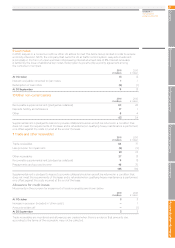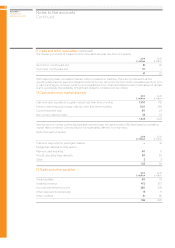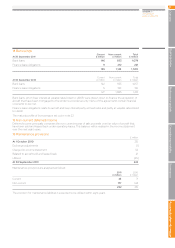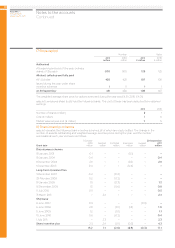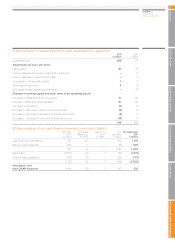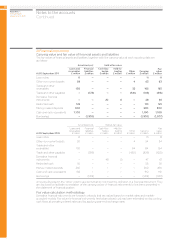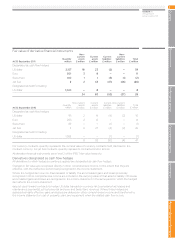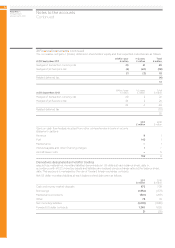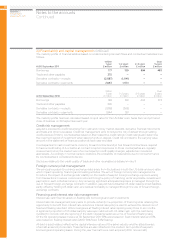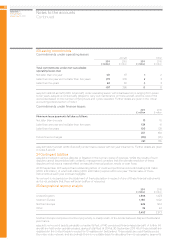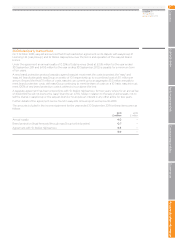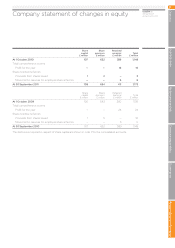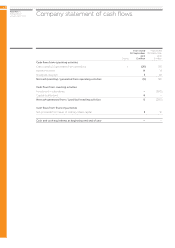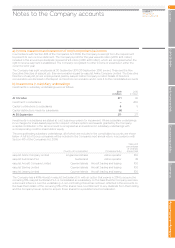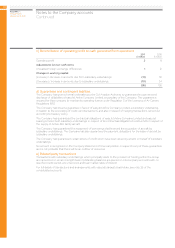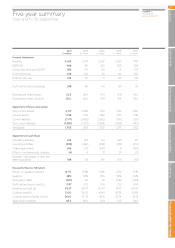EasyJet 2011 Annual Report Download - page 95
Download and view the complete annual report
Please find page 95 of the 2011 EasyJet annual report below. You can navigate through the pages in the report by either clicking on the pages listed below, or by using the keyword search tool below to find specific information within the annual report.
Amounts recorded in the income statement in respect of revaluation of monetary assets and liabilities and the
gains and losses on derivatives designated as held for trading are as follows:
2011
£ million
2010
£ million
Unrealised revaluation losses on non-derivative financial instruments (7) (7)
Realised foreign exchange gains on non-derivative financial instruments 4 2
Unrealised revaluation losses on other monetary assets and liabilities (1) (3)
Unrealised gains / (losses) on derivatives 9 (15)
Realised (losses) / gains on derivatives (11) 24
Net (losses) / gains (6) 1
Credited to other costs – 8
Charged to net finance charges (note 2) (6) (7)
(6) 1
22 Financial risk and capital management
easyJet is exposed to financial risks including fluctuations in exchange rates, jet fuel prices and interest rates.
Financial risk management aims to limit these market risks with selected derivative hedging instruments being
used for this purpose. easyJet policy is not to trade in derivatives but to use the instruments to hedge
anticipated exposure. As such, easyJet is not exposed to market risk by using derivatives as any gains and losses
arising are offset by the outcome of the underlying exposure being hedged. In addition to market risks, easyJet
is exposed to credit and liquidity risk.
The Board is responsible for setting financial risk and capital management policies and objectives which are
implemented by the treasury function on a day-to-day basis. The policy outlines the approach to risk
management and also states the instruments and time periods which the treasury function is authorised to use
in managing financial risks. The policy is regularly reviewed to ensure best practice, however there have been no
significant changes during the current year.
Capital management
The objective of capital management is to ensure that easyJet is able to continue as a going concern whilst
delivering shareholder expectations of a strong capital base as well as returning benefits for other stakeholders
and optimising the cost of capital.
easyJet manages its capital structure in response to changes in both economic conditions and strategic
objectives. The net cash or debt position, together with the maturity profile of existing debt, is monitored to
ensure the continuity of funding. During the year funding totalling $278 million was put in place all of which was
utilised during the year.
The principal measure used by easyJet to manage capital risk is the gearing ratio of debt (defined as debt plus
seven times aircraft operating lease payments less cash, including money market deposits) to shareholders’
equity. Gearing decreased in the year from 32% to 28%, principally due to operating cash flow.
Liquidity risk management
The objective of easyJet’s liquidity risk management is to ensure sufficient cash resources and the availability of
funding as required. easyJet holds financial assets either for which there is a liquid market or which are expected
to generate cash inflows that are available to meet liquidity needs.
easyJet continues to hold significant cash and liquid funds to mitigate the impact of potential business
disruption events with Board approved policy stating an absolute minimum level of liquidity that must be
maintained at all times. Total cash (excluding restricted cash) and money market deposits at 30 September 2011
was £1,400 million (2010: £1,172 million). Surplus funds are invested in high quality short-term liquid instruments,
usually money market funds or bank deposits.
easyJet plc
Annual report
and accounts 2011
GovernanceCorporate responsibility
Business review Performance and risk
Overview Accounts & other information
93


